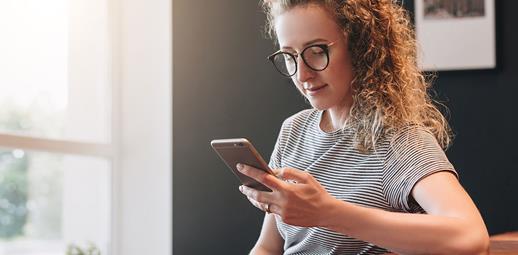
Mobile phones have become an essential part of our lives. We use them to stay connected with friends, manage our bank accounts and pay for the weekly shop. In fact, nearly a third (31%) of adults in the UK told a YouGov survey [1] earlier this year that they couldn’t get through the day without using their phone.
Losing your smartphone, or if it was stolen or damaged, wouldn’t just make daily life that bit more difficult, it could also leave you out of pocket and put your personal information at risk.
Smartphones are getting increasingly expensive. Research published in July 2020 by Uswitch [2] showed a 490% rise in the cost of top-end mobile phones over the last 20 years, from an average cost of £72.50 in 2000 to £355 in 2020. Premium smartphones now cost over half of consumers’ average monthly wage.
Take the standard version of the Apple iPhone 12, which was priced at £799 [3] when it went on sale in October 2020. Or the new Samsung Note 20, which at launch, in August 2020, had a starting a price of £849 [4].
Protecting your phone
Given their high value, it’s sensible to want to protect your handset from loss, theft, or damage.
Telecoms regulator Ofcom recommends people treat their phone as carefully as they would their bank or credit cards [5]. Steps it recommends to keep phones safe include:
- Put a passcode on both your handset and SIM, so it’s harder for thieves to use your phone, if it gets stolen.
- Make a record of your phone's IMEI number - a 15-digit number which you would need to get the phone blocked - as well as the make and model number. You can get your IMEI number by keying *#06# into your handset or by looking behind your phone battery.
- Consider barring calls to international and premium-rate numbers to make your phone less useful to thieves. You’ll need to contact your provider in order to do this and some barring services may have a cost.
- Download an app which can trace your phone if it is lost or stolen, if your smartphone doesn’t have one installed already.
- Register your phone with Immobilise, a database which helps the police to identify the owners mobile phones or other possessions that they recover.
To further protect any personal information stored on your lost phone, you may want to erase its contents remotely. Here are the steps to do this on Apple devices and Android devices.
You can also take some simple steps to prevent your phone from getting damaged, such as investing in a case and avoiding taking it in the bathroom with you to keep it away from humidity.
Is your phone insured?
If you have home contents insurance, then your mobile phone might be covered for loss, theft or damage under your policy [6]. If you want your phone to be covered for accidental damage in the home, you will need to ensure your home contents policy includes accidental damage cover or purchase it as additional cover, if your insurer offers you the option.
If you want your phone to be covered away from home, you may also need to add personal possessions cover to your home insurance policy at an additional cost. If you’re not sure about the cover you have in place or what additional cover you may be able to purchase, it’s worth checking your policy documents or contacting your insurer directly. If you don’t have contents or smartphone insurance yet, it may be a good idea to shop around online and see what cover is available.
If you bought your phone from your network provider, you may have opted in for insurance cover with your contract, or it may be included as a benefit with your bank account, so it’s a good idea to check those documents too.
Smartphones have become a treasured possession for many of us, so it’s worth giving yourself the peace of mind of knowing yours is protected.
To read more about protecting your home and possessions, go to Solved.
[1] https://yougov.co.uk/topics/technology/articles-reports/2020/09/04/who-are-brits-who-cant-iive-without-their-phone
[3] https://www.telegraph.co.uk/technology/2020/10/23/iphone-12-release-uk-price-specs-features-size-apple-deals/
[4] https://www.telegraph.co.uk/technology/0/samsung-galaxy-note-20-ultra-release-price-uk-pre-order-specs/#:~:text=Samsung%20will%20release%20the%20Note%2020%20in%20the%20UK%20on%20August%2021.